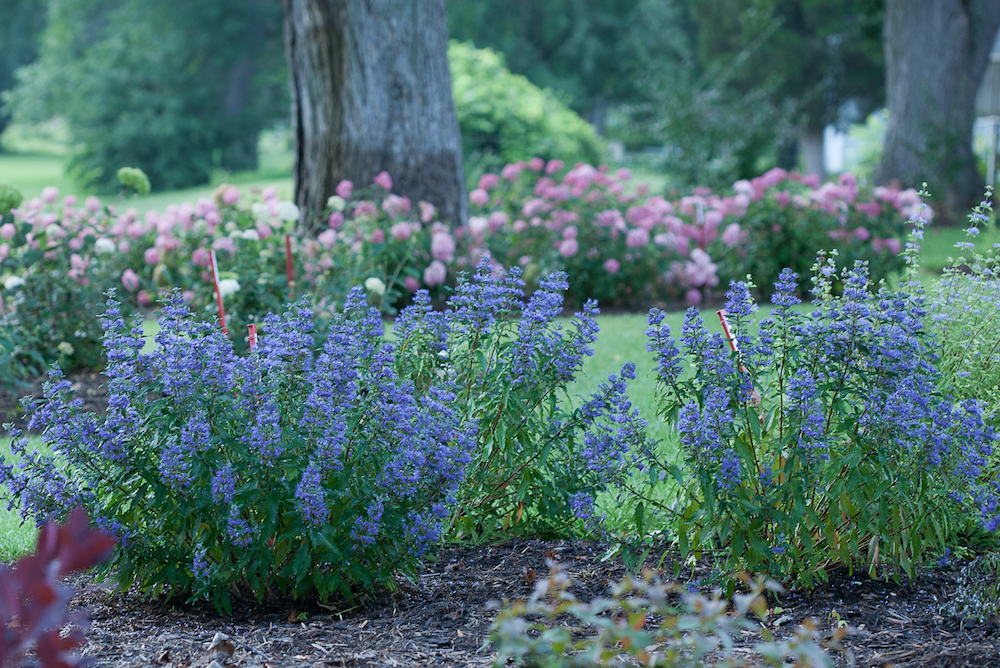Late-blooming plants soon will be at peak beauty, especially perennials with mums, asters, sedums and black-eyed Susans defining the season. Toad lilies, Japanese anemones and the aptly named, white flowers of ‘Autumn Bride’ coral bells also enhance the late-season landscape.
There also are a couple of easy-to-grow shrubs that add structure and flowers this time of year, enhancing the season and the view even more.
Late-blooming blue mist spirea (Caryopteris)
Don’t be fooled. This is not a spirea. Or a pirate, even though this plant is sometimes called bluebeard. It is blue. Better yet, it blooms in late summer, usually in August and September. An aromatic shrub, bees, butterflies and other pollinators love it.
Caryopteris loves the sun and it tolerates dry conditions. Considered a cut-back shrub, the branches are cut back to about 4 inches from the ground in late winter or early spring. It usually has a fountain form with arched branches.
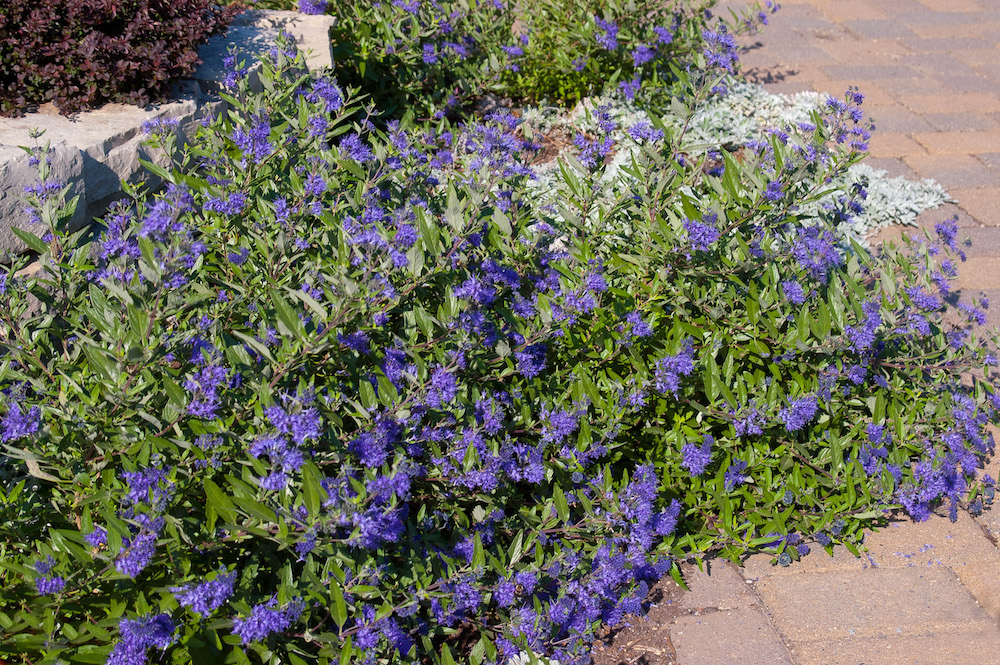
Sapphire Surf caryopteris hugs the ground. Photo courtesy First Editions Plants
Plant breeders have been busy introducing new varieties of this under-used, shrub. They’ve improved blue mist spirea’s flower power and form. Considered a small shrub, some of the newer varieties are even ground huggers, perfect for anchoring the edge of a bed.
Sapphire Surf bluebeard from Bailey’s First Editions collection is deer and drought resistant and stays in the 2-feet tall, 3-feet wide range. Proven Winners-ColorChoice has Petit Blue, which has a more upright growing habit about 30 inches tall and wide.
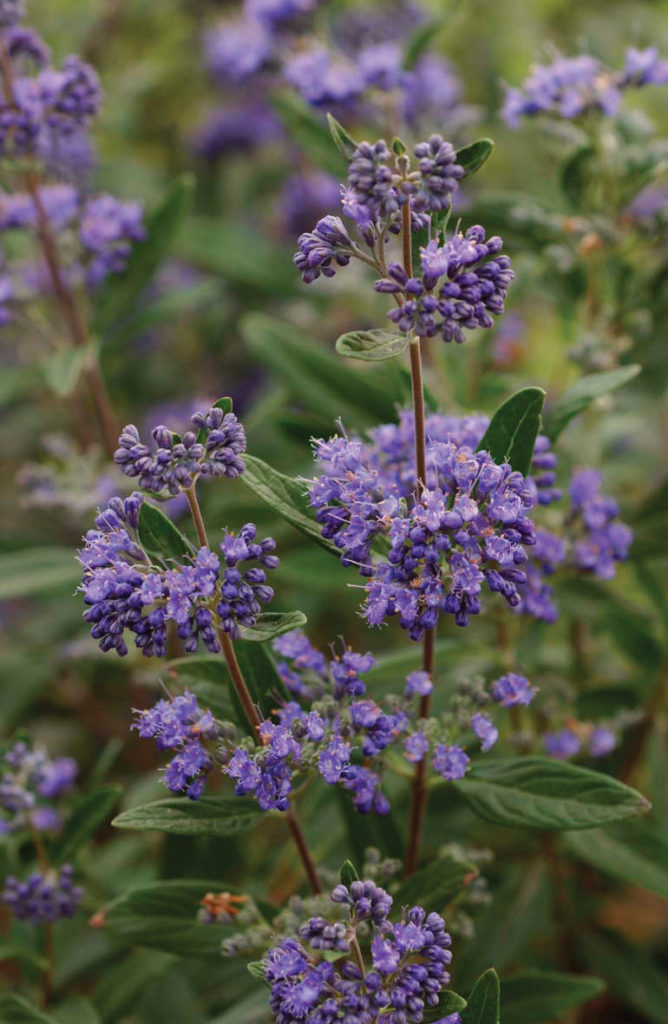
Petit Blue caryopteris. Photo courtesy Proven Winners/ColorChoice Plants
Late-blooming panicle hydrangea
Limelight, Quick Fire and many other panicle hydrangeas bloom from July into September. The lime green or white flowers turn pink as they age through the season. This color change enhances the color in the late-blooming garden. Panicle hydrangeas are among the easiest to grow.
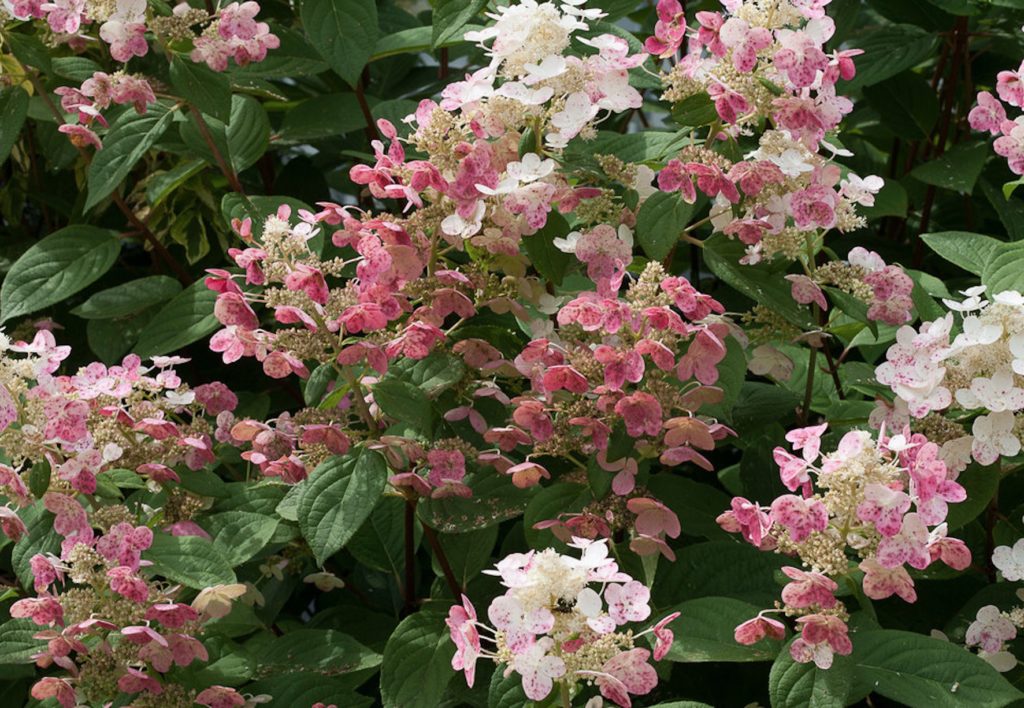
The white flowers of Quick Fire panicle hydrangea are among the first to turn pink. They hold their color well into fall for late-season beauty. Photo courtesy Proven Winners/ColorChoice Plants
They bloom on what’s called new growth. Flowers bloom along the branch’s current year growth. For winter interest, allow the flower heads to dry on the shrub to offer winter interest. The spent flowers can be removed right where their stem attaches to the branch. And, if needed, panicle hydrangeas can be shaped up in late winter or early spring.
Many panicle hydrangeas tend to be large shrubs, so making sure there’s plenty of room for them to reach mature size will greatly reduce any pruning or maintenance duties. This type of hydrangea does fine in full sun, but usually does well with four to six hours of direct sun.
Plant breeders have introduced some smaller varieties, which work very well in urban landscapes. These include Bobo, a popular variety our landscapers praise.
If interested in improving late-season interest in your landscape, contact our Mark M. Holeman’s professionals.
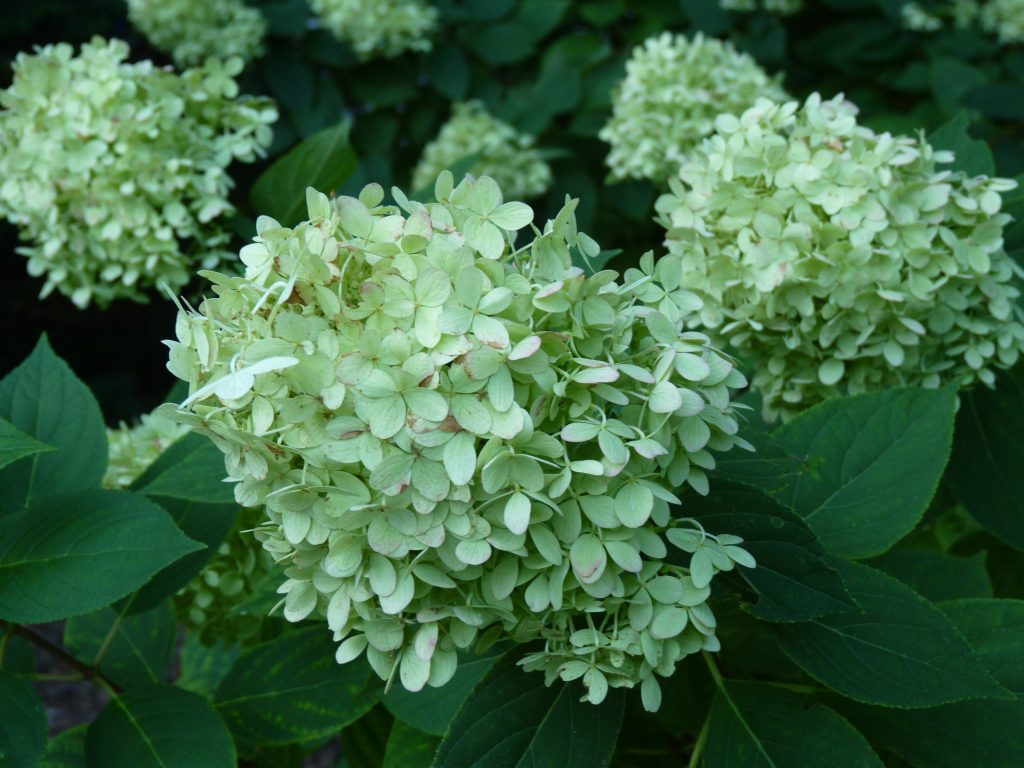
Limelight panicle hydrangea’s flowers take on pink hues to enhance the color in a late-season landscape. (C) Photo courtesy Jo Ellen Meyers Sharp
(Top photo: Late-blooming Beyond Midnight caryopteris. Photo courtesy Proven Winners/ColorChoice Plants)
SaveSave

